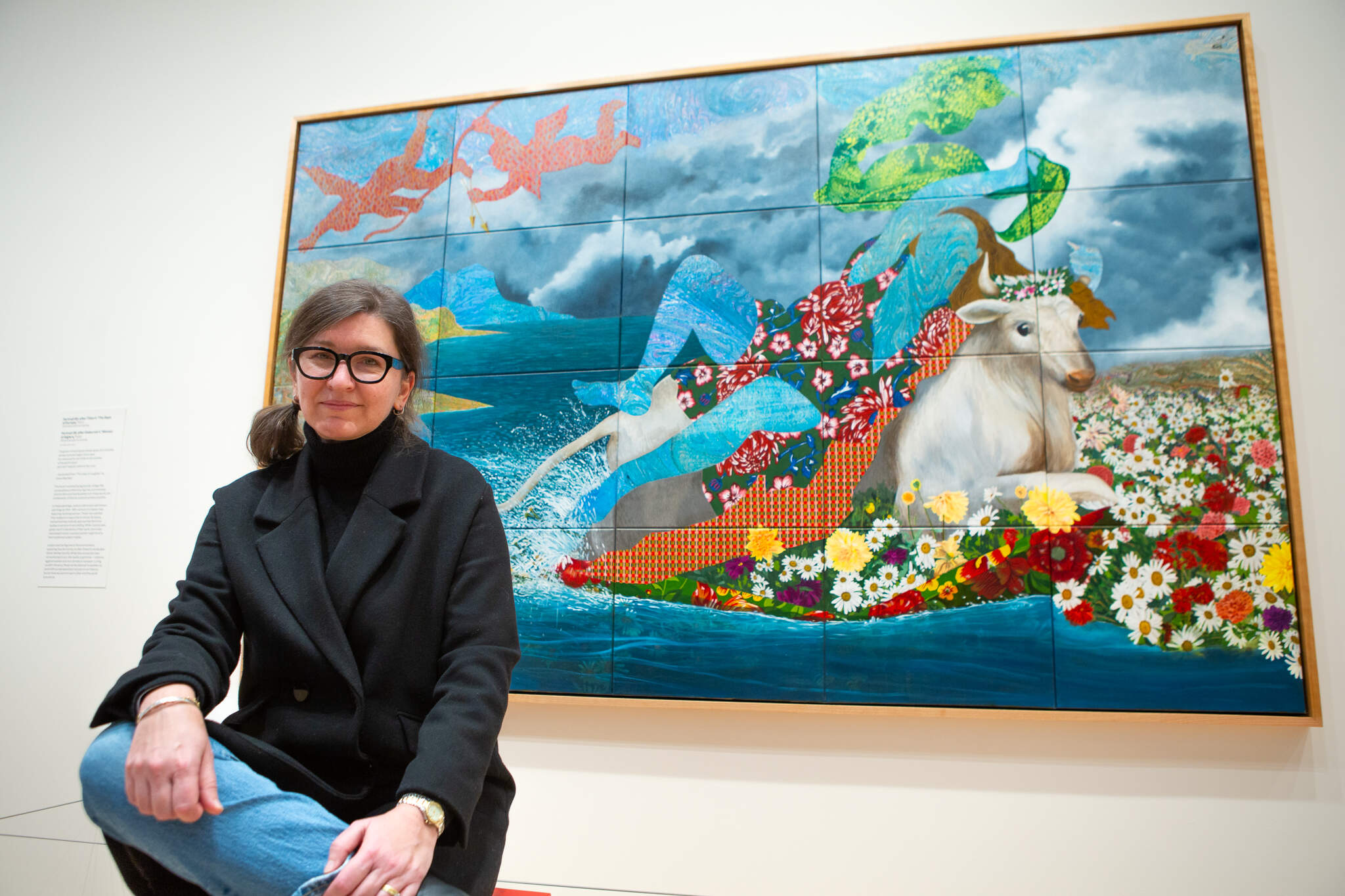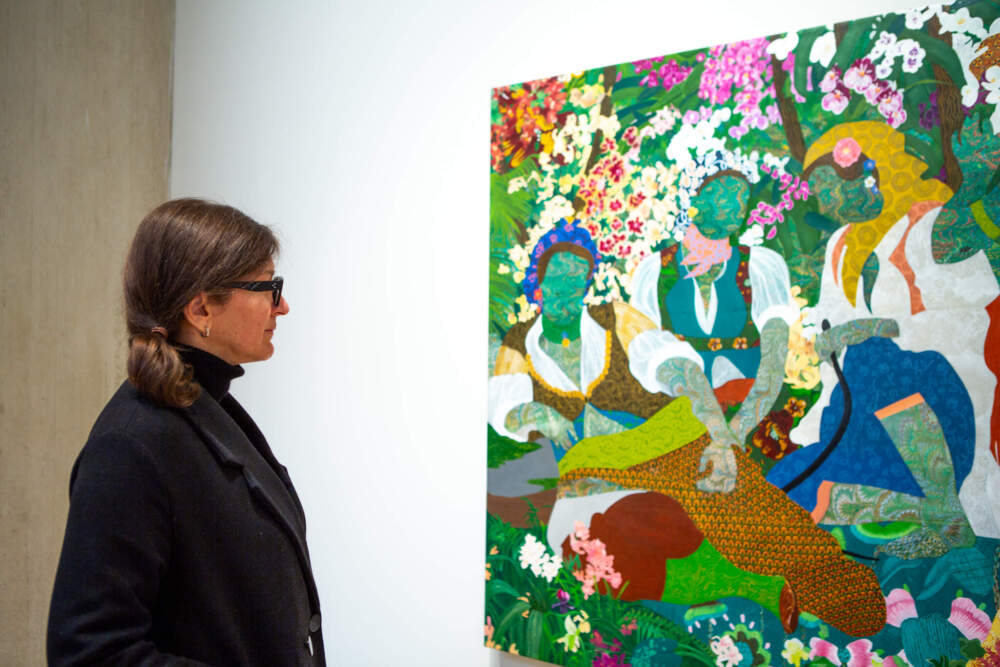Advertisement
Field Guide to Boston
Newton-based artist puts a feminist perspective on 'masterpieces'

On a recent afternoon, school groups and other patrons take in the work of Newton-based artist Dinorá Justice in the Museum of Fine Art’s contemporary wing.
The exhibit, ”Lay of the Land,” is Justice’s first-ever museum show. It’s one of the perks of being selected as the 2023 School of Museum of Fine Arts at Tufts University traveling fellow.
“It's like the holy grail of any artist to get into a space like this and have all these people looking at your work,” said Justice. “Because really that's all artists want. It's to be seen.”
Her exhibit consists of paintings of faceless feminine silhouettes, set over marbled backgrounds that reimagine art historical “masterpieces” from a feminist perspective.

Her work can be better understood by looking at the artist’s version of Eugene Delacroix's “Women of Algiers.” The original painting depicts three seated women while an enslaved woman leaves the scene. Art historians still question whether Delacroix had permission to paint them at all. In her version, Justice replaces the enslaved woman with a silhouette of herself. She says the original painting reinforces a male-dominated society that she felt compelled to rebel against.
“I wanted to rescue them,” she explains. “Take them out of that context and celebrate them for being human beings and also, wonderful women who are together in this group.”

Justice’s signature faceless silhouettes stand in stark contrast to the original paintings which depict more realistic women.
Michelle Millar Fisher is curator of contemporary decorative arts at the MFA. She says the anonymity Justice lends these women is key to understanding the work. “They are abstracted, they're anonymized, and so they become unified with their landscape in a way that connects them very powerfully, both women and nature,” Millar Fisher explains, “in sort of a riposte to these 19th-century painters who have often so populated our museums.
According to a study, just 11 percent of U.S. museum acquisitions were of work by women artists between 2008 and 2020. And looking at the intersection of race and gender, only 0.5 percent of acquisitions in that same time were works by Black American women even though they comprise 6.6 percent of the U.S. population.
Justice defines herself not just as a painter, but as a woman painter. And she’s tired of a patriarchal society but knows that a problem can’t be solved without recognition. “I'm already hearing the, ‘Oh, she's talking about the patriarchy.’ The patriarchy to me is a system that is very unjust and it's flawed and it's brought us lots of problems.” Justice says. “So I question it.”
Advertisement
The sentiment drives her creative process. When she journeyed to France to study the works of artists like Matisse and Titian, she focused on examining the place of women in these pieces.

Justice’s work questions these painters, but Millar Fisher notes that it comes from a place of admiration. “It's not as if it was a binary or black-and-white critique. But she was very interested in thinking about the ways in which she could repair, and rethink what it means to have a female painter come to this type of subject matter,” Millar Fisher says.
Justice says she feels an obligation to change the view of these painted women, but also empower others through her art. There’s also an element of self-gratification she feels when she creates. “I see myself in these ancient women who posed for these male artists,” she says. “And, good for them for having painted them, because now I have access to them, but I feel entitled almost to treat their imagery as mine, and I feel good about that.”
Justice’s paintings are both colorful and critical. Her perspective prompts viewers to question revered male artists and the status quo while paying more respect to female subjects. “These paintings are going to be here, hopefully, long after I am gone. So, I have no control over what people are going to see,” Justice says. “But there's always a hope that work that you make with some kind of intention does something in the world that is positive.”
“Dinorá Justice: Lay of the Land” is on display at the MFA through April.
This segment aired on December 26, 2023.
